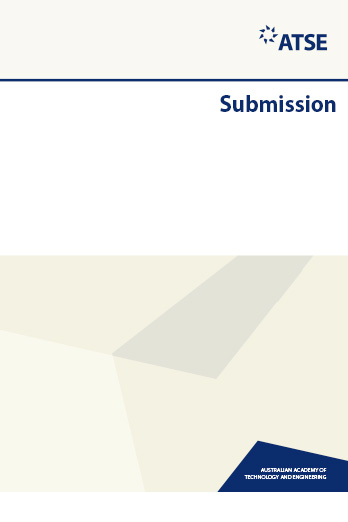ATSE considers that inspiring Australia’s next generation is crucial for the Australian economy to flourish. Critical to the success of this is the need to ensure schools deliver 21st century skills of communication, collaboration and creativity that sit alongside a clear prioritisation of mathematics and science.
The workforce of the future will be fragmented and will combine traditional roles with those emerging in entrepreneurial start-ups. Students and graduates from tertiary education that enter the workforce will need a combination of skills, both the interpersonal skills and deep discipline knowledge to adapt to these opportunities. Effective curriculum design through primary and secondary education delivered by inspirational teachers is critical in ensuring support is provided. Clear direction by industry, both large and small, on future workforce needs is essential to informing and supporting students in relation to post-school education and training.
Key points made in ATSE’s submission:
- 21st century skills of communication, collaboration and creativity must sit alongside a clear prioritisation of mathematics, computational thinking and science in school education;
- School students will be inspired to pursue STEM subjects based upon the relevance of science and technology in their lives and exposure to role models, including female role models, profiling a variety of careers;
- teachers need to be equipped with the necessary skills to assist their students to engage with future workforce changes;
- teachers should be appropriately qualified in one or more of the STEM disciplines, and in technology enabled education;
- Industry, in partnership with schools and universities, has a clear opportunity to provide work place skills to school students;
- Industry should provide STEM teachers with an opportunity for professional development by spending time in the workplace to understand how STEM subjects are applied in practice.
- standardisation of process and offering in school-industry partnerships is critical to students having comparable opportunities/experiences;
- programs that relate to the students’ career aspirations and raise their awareness of the wide range of potential career paths that build on subjects such as physics, mathematics, computational thinking and chemistry are essential;
- uniformity in partnership programs, with parameters that capture knowledge gained, as well as skills and capabilities of creativity and collaboration will provide good data for measuring outcomes;
- Outcomes of these key points or recommendations should be measured for excellence and effectiveness. Examples are:
- students being inspired and encouraged in entrepreneurial activities;
- an increase in uptake of STEM based subjects;
- an increase in students taking the more challenging STEM subjects
- girls being engaged in careers with a strong STEM focus;
- all students having a foundation level of digital literacy, computational thinking and mathematics to year 12;
- strong industry involvement in identifying and providing exposure to 21st century workplace skills;
- Strong industry involvement in the professional development of teachers.
- Any program or initiative should consider the sustainability of the program as part of the design
